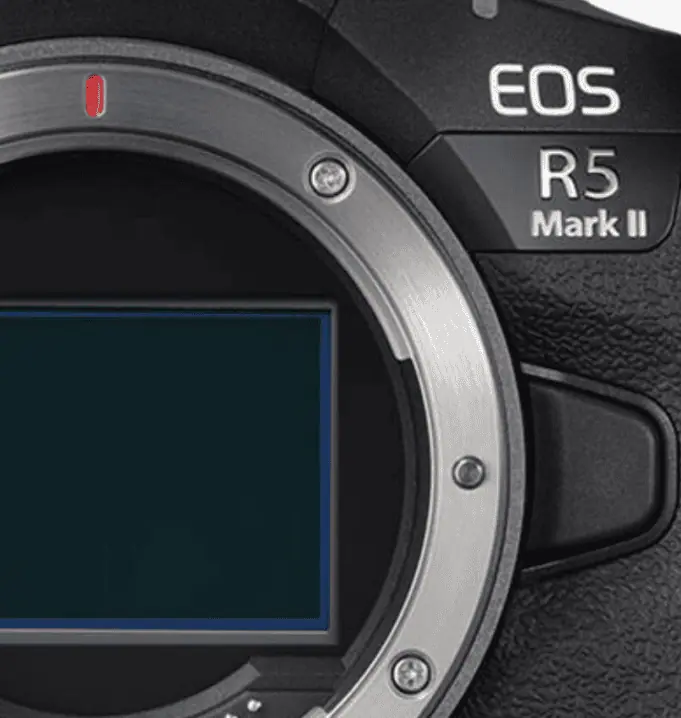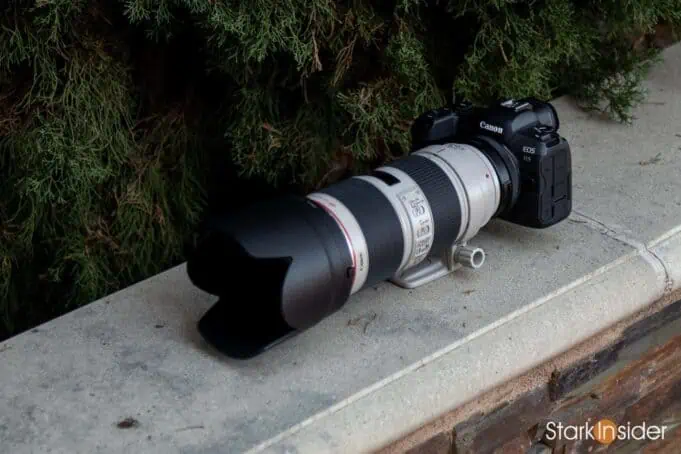To upgrade or not to upgrade?
The eternal question us video shooters and camera enthusiasts ask ourselves every so often (too often).
Now with the shiny new Canon EOS R5 Mark II on the scene many of us original R5 owners are probably wondering if it’s worth the upgrade to the latest model.
Following in the footsteps of the esteemed 5D series, peaking with the phenomenal end of the line Mark IV DSLR full-frame model in 2016, the new R5 hybrid line features all new tech, most notably a modern mirrorless design with a brand new mount (RF).
With pretty incredible specs such as 8K/30 video, in-camera RAW, C-Log3 and 5-axis image stabilization (a Canon first) the R5 was, indeed, a groundbreaking camera. Something Canon seems apt to do every decade or so.
And now along comes the Mark II.
Non-exhaustive list of key upgrades of note for existing R5 owners:
- New stacked BSI CMOS sensor
- New dual processor (Digic X and Digic Accelerator)
- Upgraded to 8K/60 RAW 10-bit video
- Upgraded to 30fps continuous shooting
- Added XF-AVC codec
- Added Canon C-Log3
- Added waveform monitor and false color
- Revised placement of on/off switch (to the right side of the top plate)
- Revised full-size HDMI connector in place of micro
- New dedicated stills/video switch (to the left side of the top plate where power switch is located on the R5)
- New beefier battery (LP-E6P) — compatible with older ones
- MSRP: $4,299 USD
- Available: Pre-order
On paper the R5 Mark II is surely a beast.
Essentially this should be most content creator’s dream camera. Amazing video. Amazing photos. All in one, relatively compact body set for years of use as a workhorse. Professional production houses, and high-end wedding and commercial shooters probably have their pre-orders already in. If you know you need this camera then you know. And the upgrade is a slam dunk.
However, if you’re like me and mostly use it for photography and don’t chase the latest and greatest then there’s a camera that already meets your and my needs: the original Canon EOS R5. It’s still an amazing camera, even in 2024 — and likely far beyond.
The Point of Diminishing Returns

Sort of like we’re seeing in the smartphone market where new models are increasingly incremental in nature with respect to new features, I’m seeing a similar trend in the world of ILE cameras. Be it ones made by Canon, Sony, Panasonic or Nikon, the level of innovation, in my estimation at least, has tapered somewhat. Inevitable I suspect.
I remember, back in the day, I would upgrade my Canon DSLR body in a heartbeat with each new release. From the EOS T2i to 60D, 70D, 80D, and finally the 90D, the process was as natural as were the significant jumps in image quality, speed and video capabilities. These days not so much.
Sure the R5 Mark II ups the game in almost every respect. But who really needs 8K 60fps?! Specialty applications will no doubt want it. Maybe certain scenarios for high speed sports, stop motion, scientific projects and certain wildlife? For the rest of just creating small indie stuff it’s completely unnecessary — like driving a Supercar with 0-60 times of 2.5 seconds to the grocery store. Just try some rough tablecloth math shooting at those levels for your next project and you can go ahead and at least double, maybe triple, your storage budget. Not to mention the time needed to create proxies and the heavy lifting and encoding needed in post production.
However, if you’re deep in the ecosystem, especially shooting pro cinema then I can see the C-Log2 addition being useful for color matching. That alone should warrant a jump to the new model I would think for many.
The Canon EOS R5 Mark I: Still Amazing
Safe to say most R5 shooters are pretty happy. A quick glance over at B&H Photo shows a composite 4.7 out of 5 stars. Out of 879 reviews as of this writing, 740 (84% of the reviews) award it 5 stars. Both the quantity and quality of the reviews for the camera speaks to its user base. There’s not many, if any, current cameras that I can find on the site that have similar levels of positive engagement.
There’s another trick in Canon’s book… and that’s the color.
I use the R5 primarily to take high resolution masters of Loni’s oil paintings and other artwork for reproduction and archiving. Setting up a small photo station for shooting canvases has taught me a lot over the years. Truing up the frame is tricky stuff. Getting the lighting right, and reducing glare equally so.
Aside from all that, though, is the challenge of achieving color accuracy. I’ve tried my Sony (older a6000) and other cameras, but none can touch Canon in that respect. Especially the R5. When I import the RAW files into Lightroom and zoom in on the oils and compare them to the originals there’s no contest; the Canon wins accuracy every time. I’m not saying it’s perfect. Often I still need to tweak and color grade, perhaps use the dropper and do some hue shift, to get things to match across the board. Some or most of that, though, likely has more to do with my lighting that it does the Canon sensor.
It’s also why I simply can’t shoot serious stuff with my iPhone 15 Pro. Despite all the ballyhoo around its camera specs, in my experience it’s really designed for the social media era. To stand out on crowded timelines. The resulting over-saturated and over-sharpened images are ideal for the “look at me” world, but not so much for the projects I’m working on. Hence the need for this type of camera.
It’s also why I simply can’t shoot serious stuff with my iPhone 15 Pro.
Granted, for video I still rely on the impressive Panasonic GH6 (has a camera company every crammed more tech into a body?) for travel work and for tight spaces. And I use an older RED Dragon when Loni are working in the studio on videos. But the R5 and R5 Mark II are compelling choices for those who need a proper hybrid that can cross both worlds of video and photo at the highest level. Canon has done well here to extend the fabled mythology of the 5D.
But here’s the thing for those in the market for a full-frame Canon mirrorless, notably the R5. The original Canon EOS R5 now sells for $2,999 USD. That’s down from the launch price of $3,899. Though expensive, for what it offers I think it’s one of those (near) lifetime purchases. You really could use it for many years to come. I suppose I should never suggest anything like this is forever. That, after all, is reserved for the glass. Marry your lenses, date your bodies. Right?
For almost 30% less than the Canon EOS R5 Mark II ($4,299) would-be buyers would do well to consider saving some money and perhaps putting it towards the lens budget, or lighting, or memory cards, or, if you’re in the world of filmmaking, set design, costumes, etc. (then again, I should note that the R5 Mark II is already a “Best Seller” on B&H!)
As for would-be upgraders? I like what Canon continues to do, always refining and pushing the envelope with these updates. No doubt a Mark III and Mark IV are on the roadmap. And, who knows where we’ll be with AI at that point and if we even need cameras anymore (we will). Remember, though, your OG R5 still powers on, and still takes the same stellar videos and photos it did before the Mark II. I say stay put for now and go create some more.
The Canon EOS R5 Mark II ships August 20, 2024. US MSRP is $4,299 for the body (vs. $3,899 launch price for the original R5). Pre-orders are now open.



